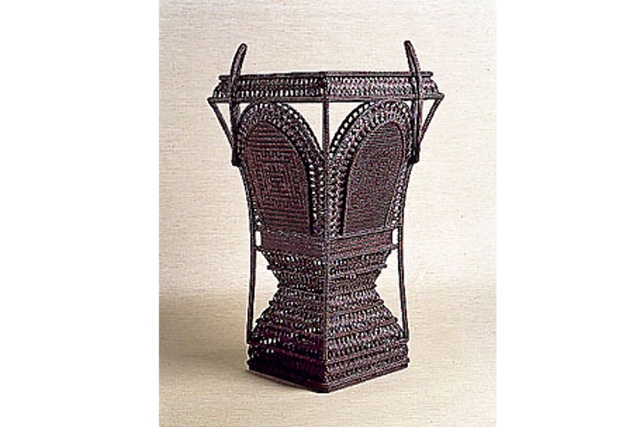Bamboo Masterworks: Japanese Baskets from the Lloyd Cotsen Collection

I feel that the pieces I make must have musical qualities, changes in rhythm, a series of climaxes, and an overall harmony.
--Shôno Shôunsai (1904-1974), bamboo basket maker and Living National Treasure
The history of bamboo baskets in Japan begins with their use as utilitarian objects during the Jômon period (10,000-300 B.C.E.). Along with serving diverse functions in daily life, bamboo baskets have been praised in specialized aesthetic contexts for centuries. As early as the Yayoi period (300 B.C.E.-A.D. 300), excavated earthenwares with impressed patterns of woven bamboo indicate an aesthetic appreciation of woven textures. Today, bamboo baskets are an integral and cherished part of the time-honored flower arrangement and tea ceremony. Referred to as hanakago (flower basket) or hanaire (flower container), the Japanese bamboo basket exhibits extraordinary beauty and intricate craftsmanship. Modern basket makers explore the infinite possibilities of bamboo not by neglecting tradition but by grounding their imagination and creative potential in technical mastery. Dating from the late nineteenth century to the present, the baskets in this exhibition reflect the long tradition and transformation of Japanese basketry.
The Lloyd Cotsen collection of Japanese baskets is among the most important in existence. Approximately one hundred of the finest pieces, selected for their sculptural forms and intriguing textures are being presented to the public for the first time in this exhibition.
Here you will find a collection of images from the exhibition, along with a detailed essay which should help provide some context and historical background to the work being presented. In addition, Energy and Strength in Balance: The Bamboo Basket Art of Fujinuma Noboru, an article by Robert Coffland, published initially in Orientations Magazine and reproduced here in full, examines the trajectory of a renowned post-war bamboo basket artist, Fujinuma Noboru.
